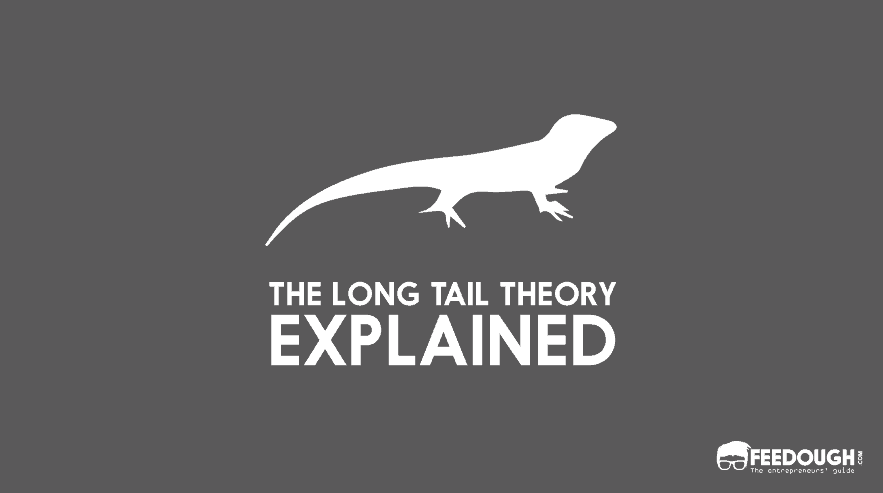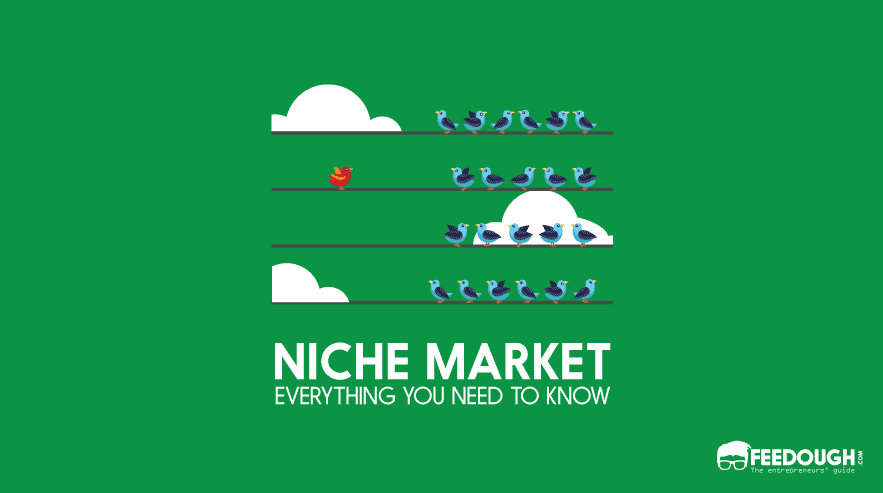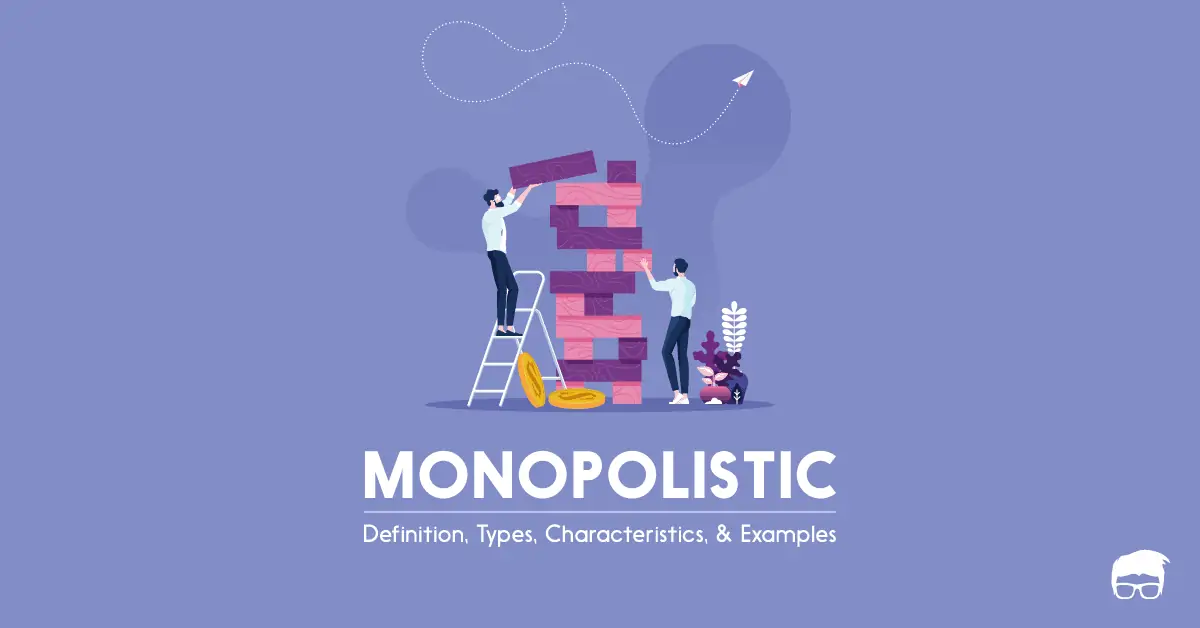It’s a long-known fact that there has always been a limited shelf space. Retailers, wholesalers, and distributors only stock goods that have considerable demand in the market.
Because stocking goods with low demand volume isn’t profitable, right?
Well, it was true until the evolution of the internet, cloud storage, globalisation, and unlimited virtual shelf space.
Welcome the long tail effect theory which states that you can earn as much or even more than the usual profits if you appeal and cater to the niche markets instead of the broad market.
What Is Long Tail in marketing?
Long tail in marketing refers to those offerings which are in less demand compared to the actual popular product of a specific category.
Some examples of long tail markets are (different types of) laptop chargers in the laptop niche, (different types of) mobile covers in the smartphone accessories market, and (different types of) customized gifts in the gifting niche.
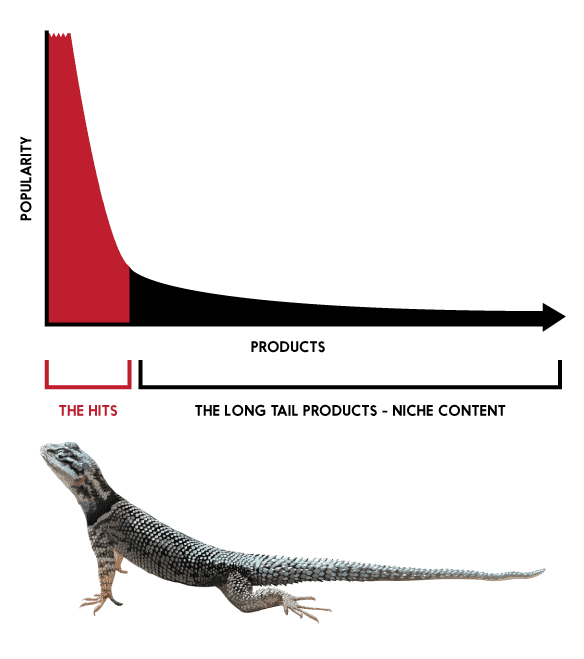
The usual retail scenario runs like the above graph where there is one dominant head in the front (the popular product which referred to as ‘hit’) followed by a long tail of not that popular products.
What Is Long Tail Marketing?
In the usual retail environment, a small group of popular products dominate sales. These popular items could be a newly released gadget, movie, book, game or any recently acclaimed product. The stores focus on stocking up and promoting these popular products to earn most of the profits while other products in the inventory continue to sell in a usual pattern with no single item making a big impact.
Long tail marketing is a business strategy of equalling or exceeding the market demand of a hit product by stocking, offering, and marketing many less demand volume niche products. Unlike the usual strategy of product promotion, the long tail strategy focuses more on inventory management and selling multiple less popular products to generate as much profit from the long tail as the hit head.
The concept of long tails was introduced by Chris Anderson in his book named ‘The Long Tail: How Endless Choice is Creating Unlimited Demand’. He used the book to explain the market that is being created and catered to with the advent of the internet and availability of endless information.
His argument in the book revolves around how consumers in the modern economy are shifting towards individualized niche products than being attracted to a small number of ‘hit’ products. He states that globalization and the internet revolution has made it really easy and economical to produce and stock a large amount of less-demand products. This eventually creates more choices for the consumers to choose from and helps the seller stand out by catering to a niche or micro-niche.
The Economics Of Long Tail
The economics of the long tail theory works in the following way –
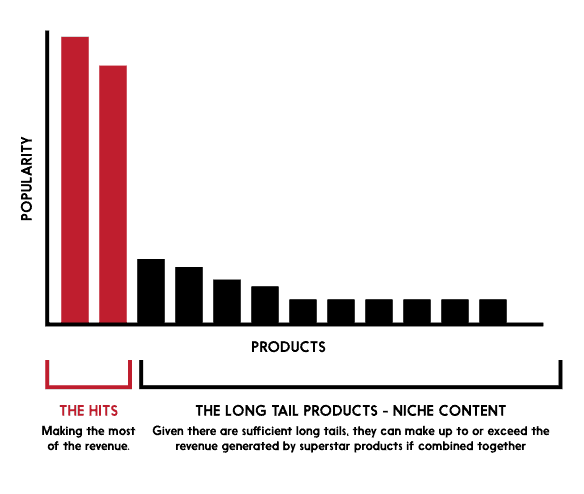
While the superstar product makes most of the revenue, given there are considerable niche products, the long tail can equal or exceed it if combined together to serve the evolving market.
Let’s look back a bit to explain it further –
Before the advent of the internet, most of our demand was created by the limited supply itself. The lack of available information and the limited shelf space made most of our assumptions about popular taste the artefacts of inefficient supply and distribution.
Then came the internet which gave rise to unique preferences of the individuals who started moving away from the popular trends. Since the globalization and the internet also made it possible to stock and distribute all the niche products which these individuals preferred, it gave rise to the long tail strategy.
While the long tail looks like a strategy opposing the usual belief of high demand leads to more profits, it actually works on the same line. The long tail strategy believes in bundling up the demand for niche products and increasing the profits by capitalizing on it.
Why Long Tail?
According to research by MIT, three kinds of demand drivers exist in the market. These are –
Technological drivers – 57% of online shopping starts with the search engines. Besides search engines, personalization and recommendation techniques and online communities and social networks also drive the demand for the product.
Supply-side drivers – Technology has made it easy to add the inventory of stock of digital as well as physical products. Moreover, new supply side demand driving models like dropshipping and affiliates have also come into existence which influence the decision-making process and promote niche products. The technology has also made the supply side strong by making it serve the global market at once.
Non Technological drivers – The non-technological drivers include the psychological drivers of being part of the group or standing out of the group which influence the decision-making process of the customers.
While there are arguments on both the sides that these drivers either favour the demand for the superstar products or the niche products, the truth is that it totally depends on the industry and how you’re capitalizing on the demand.
On one side, Netflix saw a rise of 45 million accounts who watched Birdbox, Amazon, on the other side, has been using the long tail marketing strategy for years to generate additional revenue for itself.
The long tail strategy has two applications –
- To increase the customer lifetime value by using long tail strategies like cross-selling and recommendations etc.
- To stand out in the market and increase sales by building a brand out of long tail products or just capitalizing on the untapped market.
In simple terms, either you can focus on long tail offerings as add-ons to your superstar product, which will increase the customer lifetime value and attract more customers, or you can bundle up and just focus on the long tail offerings to compete with existing players and create a different positioning for yourself in the market.
Long Tail Examples & Applications
From e-commerce to entertainment platforms, the application of the long tail strategy isn’t limited to any single niche.
eCommerce
The long tail strategy works perfectly for eCommerce marketplaces like Amazon which makes 57% of its books sales from long-tail searches.
Other than this, there is a rise of niche-oriented e-commerce stores like Etsy (for handmade and unique products), Redbubble (unique products from the artists), and many niche oriented Shopify stores which serve to long tail demands.
Entertainment Platforms
While Netflix uses the popular superhits to get many people to subscribe to it, it’s AI-powered personal recommendation system monitors the activities of the users to suggest them the long tail content according to their own needs. This makes them stay with Netflix for long and increases their lifetime value.
Other than this, Youtube and other free streaming platforms are filled with niche-based content to cater to highly demanding customers.
Websites & Blogs
Websites make use of the long tail strategy to optimize themselves for the search engines. They create a large number of pages to cater to every long tail keyword search related to their niche. For example, a website operating on an affiliate marketing business model in the smartphone niche may focus on all the possible keywords related to smartphones. These can be –
- Best smartphones under $500,
- Best smartphones under $600,
- Best smartphones under $700,
- Best smartphones under $1000,
These will lead to more traffic than compared to just writing a post on Best smartphones under $1000. The website can also take an approach of reviewing individual smartphones to increase its traffic even more.
A perfect example of a website using such long-tail marketing strategy is Lifewire.

Customized & Personalized Goods
New customized goods stores have become a reality just to capitalize on the unique and personalized needs of the target market. These customized goods companies make use of technology to develop or print products on-demand based on the need of even a single customer.
3D printing companies and customized gifts companies make use of this highly targeted niche segment.
Go On, Tell Us What You Think!
Did we miss something? Come on! Tell us what you think of our guide on the long-tail theory in the comments section.
A startup consultant, digital marketer, traveller, and philomath. Aashish has worked with over 20 startups and successfully helped them ideate, raise money, and succeed. When not working, he can be found hiking, camping, and stargazing.
